#black ottomans
Explore tagged Tumblr posts
Text
Ottomans are small pieces of furniture with many uses. Browse through our collection of ottomans from Footstools & More and get the one you love the most.
0 notes
Text
as a sidenote, it's very sad that I can't find a gifset showing just how incredibly handsome bashir salahuddin is in South Side, because he is.
#I do think there's a 2010s awkward in-between phase of television#where tv has discarded the season after season modus operandi; but it hasn't adjust to the new status quo#and become the ''you're not getting renewed unless you break records'' internet-centric machine it is today#for example: south side's first season is respectable but nothing to write home about#(with the exception of one episode about black girls. that episode made me pause and focus on nothing else.)#but its second season? delightful. playful. there's one episode that's a ferris bueller homage#but with a south side of chicago twist.#and another that follows a rented ottoman (the furniture) through the years.#it's clever and fun and has whimsy.#there's an episode where one of the leads takes his kid to the 63rd street beach; they hang out they swim.#and given all the freight that swimming in lake michigan carries for black men in chicago#it's actually really touching.#anyway. it's a fun show and also I desire bashir salahuddin carnally.#a proscenium for our dreams
27 notes
·
View notes
Text


Model 1861 Breech Loading Converted Springfield Rifle from the United States of America dated to the 19th Century on display at the Black Watch Castle and Museum in Perth, Scotland
This rifle was captured from the Arab Auxiliary Force by the 2nd Battalion The Black Watch at Sanai in Mesopotamia, 1917. The rifle is a breech-loading Springfield Model 1861. This type of rifle was used by the US Army during the American Civil War, 1861 - 1865. Large quantities of these surplus rifles were sold to the Ottoman Empire in 1869 and were still in use by auxiliary units during the First World War.
Photographs taken by myself 2024
#military history#ottoman empire#turkish#turkey#20th century#first world war#black watch castle and museum#perth#barbucomedie
50 notes
·
View notes
Text




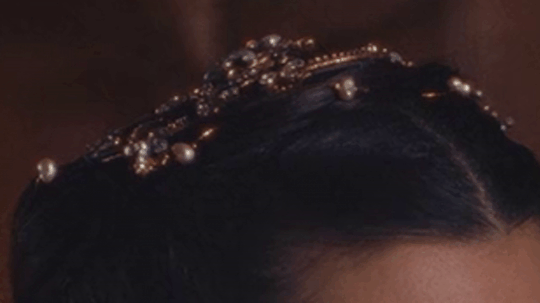

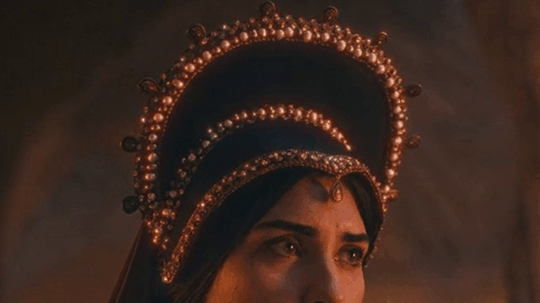
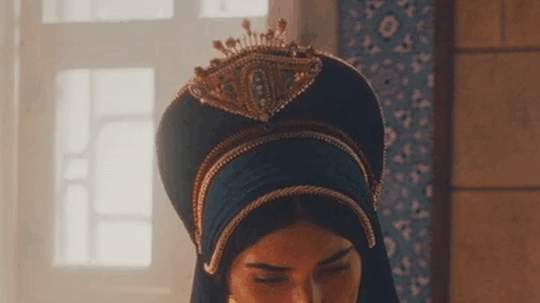


Rise of Empires: Ottoman + Headpieces
Mara Branković's headpieces.
#Rise of Empires: Ottoman#Mara Brankovic#Mara Branković#period drama#perioddramaedit#costume drama#costumesource#headpieces#1400s#15th century#hair jewellery#hats#hoods#gold#silver#white#blue#purple#black#brown#Constantinople#Istanbul#Adrianople#Edirne#Ottoman Empire#Buda#Budapest#Hungary#Smederevo#Serbia
151 notes
·
View notes
Text

14 notes
·
View notes
Text






The sparkle of the black caftan worn by Kösem Sultan in 25 Episodes
#kösem sultan#beren saat#black tumblr#magnificent century#muhteşem yüzyıl#muhteşem yüzyıl kösem#magnificent century kösem#osmanlı#ottoman#perioddramaedit#periodedit#period rp#periodedits#costume#magnificent century kosem#magnificent woman#dailywomanedit#dailyactresses#dailywomen#femaledaily#fyp#tumblr fyp#period drama#historical drama#history
27 notes
·
View notes
Text

"His name is Spruce, and if Mary is to be believed, he's a real loudmouth."
#stupid art#toontown#toontown corporate clash#deep diver#treekiller#ottoman#mary anna#spruce campbell#thomas saggs#fanart#digital#black artist
149 notes
·
View notes
Text
Ecologies of Imperialism in Algeria, by Brock Cutler, begins with an account of food poisoning in nineteenth-century French Algeria. A deep rural crisis of drought and famine in the late 1860s had reduced the amount of fuelwood coming into the city of Algiers, leading one baker to use construction debris shipped to the colony from Paris to fire his bread oven in early 1869. The lead paint on that metropolitan rubble, product of Baron Haussmann’s transformation of the French capital, became a toxic element in the bread that sickened settlers in the colony. The author [...] treats this small episode as a microcosm of the divides, the unruly circulations, and the nonhuman actants and processes that characterized the early decades of colonial rule in Algeria, which the French invaded in 1830.
These divisions and circulations include those between metropole and colony, between modern and not modern, between person and environment, between human and nonhuman, and across the colonial frontier with Tunisia. [...]
---
The first [of three major narrative veins in Cutler's study involves] [...] bread [...], the consumption of wheat grown on the Mediterranean plains of Algeria [...]. The toxic bread affair of 1869, however, was a reminder that the distance between metropole and colony was not so great. [...] The second vein examines the production of new ecosystem relations [...]. [T]he violence of decades of uneven conquest and the confiscation, appropriation, and enclosure of land and its reorientation toward regional and international [European] markets between 1830 and 1870 thoroughly destabilized rural Algerian life. This fragility turned lethal in the final years of the 1860s, when a series of environmental crises - locust plagues and drought - caused widespread famine and ultimately the deaths of up to eight hundred thousand Algerians. [...] The emptied land and cheap labor that were outcomes of the environmental crises enabled [France] to complete the capitalist transformation of rural Algeria [...]. Another outcome of the environmental crisis was an increase in the number of rural Algerians migrating to cities, where they were perceived as both a threat to public order and a reservoir of potential labor energy. [...]
[D]ivisionary logics, including the line between city and countryside and the modern gendered subject, were being performed, produced, and reproduced in the context of environmental crisis.
---
[Another] major element [in Cutler's scholarship] [...] is an exploration of the complex politics of policing French Algeria’s eastern border with Tunisia, in the era before French colonial rule began in the latter polity in 1881. [...] [T]his border, officially demarcated in 1846, was only integrated into local ecosystem relations over the course of subsequent decades. Repeated performance of sovereignty through patrols and taxation of pastoral communities that lived and worked in the frontier commons instantiated the border, but the border region remained resistant to the forms of modern statecraft, such as standardization, bureaucratization, and written transactions, that French authorities preferred. [...] [Cutler] draws on intentionally “mundane” examples to show how they were critical to the steady reproduction of a modern imperial border (p. 47). [...] [A specific] episode of transborder [dispute] [...] in 1869 [...] became a referndum within the settler community on the virtues of military rule and a reminder for that [European] community of [supposed] indigenous incompatability with modernity. [...]
[T]he various divisions illuminated by the story - between modern and not, between inside and outside, and between European and Algerian - were performances staged at various times and places, not eternal features of the society or landscape. The repetition of “divisionary logics,” in the author’s telling, were at the heart of French colonial modernity (p. 149). [...]
---
[T]horough reading of the French colonial archive, from official sources as well as memoirs, newspapers, and periodicals [...], [t]he first two narrative threads, on bread and disaster, demonstrate the significance of moments of crisis [...] in actually changing the course of history [...] [and] longer-term [...] ecological transformations. The other thread, however, examines how the mundane performance of modern sovereign power and its divisionary logics, over time, made real or even naturalized the new imperial frontier between Algeria and Tunisia. Both [...] society-wide crises or the steady performance of the mundane logics of power [...].
---
All text above by: Jackson Perry. "Review of Cutler, Brock. Ecologies of Imperialism in Algeria". H-Environment, H-Net Reviews. April 2024. Published online at: h-net.org/reviews/showrev.php?id=59842. [Text within brackets added by me for clarity. Bold emphasis and some paragraph breaks/contractions added by me.]
#on here ive previously shared and recommended article excerpts from cutler on borders frontiers and performance of power#he has cited some interesting examples of french official correspondence plotting to cut down forest and enclose land#while officials were explicitly discussing the importance of repetition and performance to slowly naturalize national borders#so that they could introduce idea of property and establish monopoly on force to justify their resource extraction#he cites many sources and if youre into frontiers borderlands etc check out his articles maybe#bunch of fascinating little anecdotes and stories about french officers and also local algerian disobedience and subversion#ruralurban divide and gender performance that subjects had to partake in to remain either legible or illegibile to french#ecology#abolition#landscape#multispecies#imperial#temporal#carceral geography#tidalectics#intimacies of four continents#ecologies#indigenous pedagogies#black methodologies#ottoman environment#SWANA environment
22 notes
·
View notes
Text

A German, Bulgarian and Turkish soldier on patrol together in Constanza, Romania.
#ww1#circa 1915#1910s#wwi#the great war#german army#ottoman#Romanian#world war 1#first world war#photography#black and white#war history#tumbler#wwi era#ww1 era#war#wars#world war i#world war#eastern front#Axis countries#wwii#history
16 notes
·
View notes
Text










Old ottoman photos(1800's)
7 notes
·
View notes
Text

Greek bourgeois lady from the Fener district of Constantinople, 18th Century.
Oil painting attributed to Jean B. van Moor (1671 -1737). From the Benaki Museum in Athens, Greece.
*Fener (Phanari) is the district of Istanbul where the Patriarchate is located. The name is derived from the Greek word "phanarion" meaning lantern (or streetlamp). Fener was the traditional Greek neighborhood of the city during the Ottoman era.
#art#paintings#greece#ottoman empire#greek women#I love the expression on her face#and the black curls!#it's a pity there isn't an information on who the woman is
7 notes
·
View notes
Text
Fave Five: Trans Historical Fiction
The Companion by EE Ottoman Confessions of the Fox by Jordy Rosenberg All the White Spaces by Ally Wilkes Wrath Goddess Sing by Maya Deane A Lady for a Duke by Alexis Hall Bonus: These are all Adult, but in YA, check out The Spirit Bares its Teeth by Andrew Joseph White Double Bonus: Coming in 2024, The Woods All Black by Lee Mandelo

View On WordPress
#A Lady for a Duke#Alexis Hall#All the White Spaces#Ally Wilkes#Andrew Joseph White#Confessions of the Fox#EE Ottoman#Jordy Rosenberg#Lee Mandelo#Maya Deane#The Companion#The Spirit Bares its Teeth#The Woods All Black#Wrath Goddess Sing
52 notes
·
View notes
Text
Mocenigo Appreciation Time
Today's National Italian Day, so in honour of our Repubblic let's hear it for an older repubblican italian rep, AND the most randomly bullied character in the first 10+ Episodes.
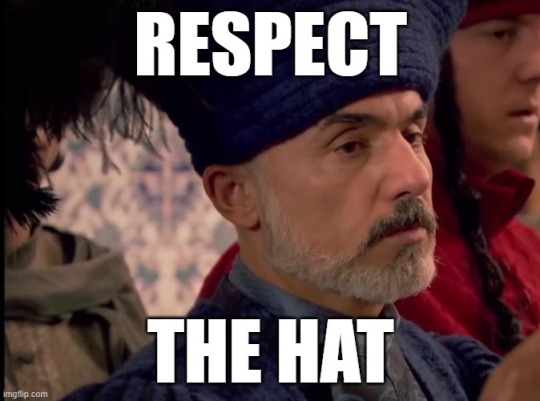
Btw Ibrahim pretending not to speak italian for a while just to be able to annoy the guy by mocking his hat, and then do the power move of "I too can actually speak an hilarious broken italian instead of the Venetian we're supposed to be speaking" is the moment in which he first lost points in my book.
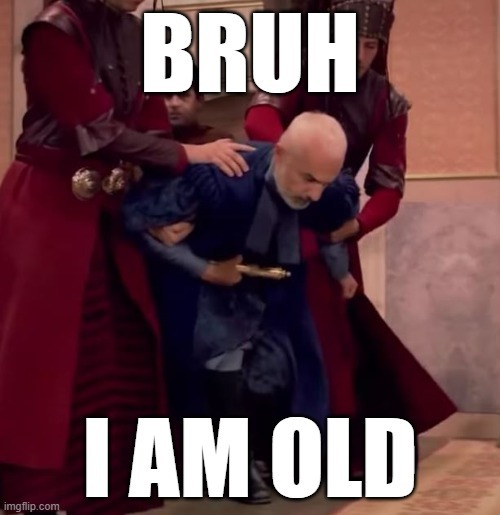

Dat Kafir drip, tho.

#muhteşem yüzyıl#magnificent century#magnificent tumblring#ottoman history#sultan suleyman#magnificent memes#dizi review#Venice is Serenissima but I'm not#Guys my joints wtf#I can bow on my own#don't mess with the hat#I don't even know if this character is supposed to be smart or hapless#he got drip tho#kafir klein#what happened to diplomacy#what has my life come to#Just another guy doing his job#I got your threat to Venice the first time you're not subtle#You wish you had a hat this cool Ibrahim#blue is the new black
54 notes
·
View notes
Text
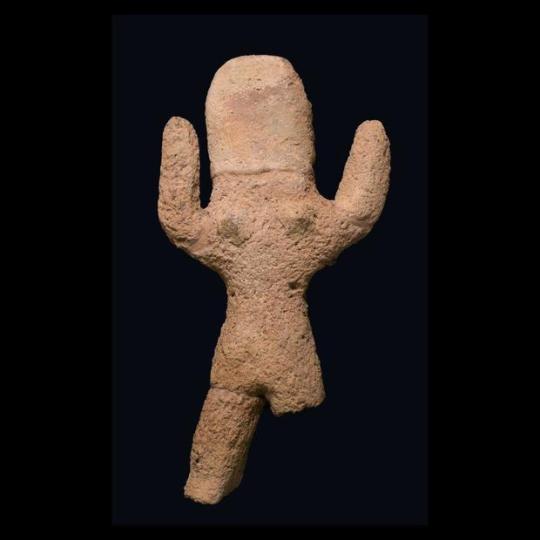
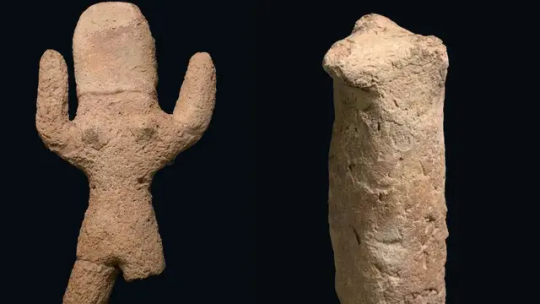

Artifacts Found in Israel were used by "Sorcerers" in "Magical Rituals" 4 Centuries Ago
Israeli researchers have uncovered artifacts that "professional sorcerers" used in "magical rituals" hundreds of years ago, the Israel Antiquities Authority said in a news release.
The professional sorcerers would have been visited by Muslim pilgrims traveling from Cairo in Egypt to the city of Mecca in the Arabian Peninsula. The rituals would include attempts to ward off the "evil eye," heal diseases and more. The three researchers on the project said in a joint statement that the discovery shows that "people in the Early Ottoman Period — just as today — consulted popular sorcerers, alongside the formal belief in the official religion."
"This is the first time that such a large assemblage of ritual objects of this kind has been found," the researchers — Itamar Taxel of the Israel Antiquities Authority, Uzi Avner of the Dead Sea-Arava Science Center and Nitzan Amitai-Preiss of the Hebrew University of Jerusalem — said in the news release.

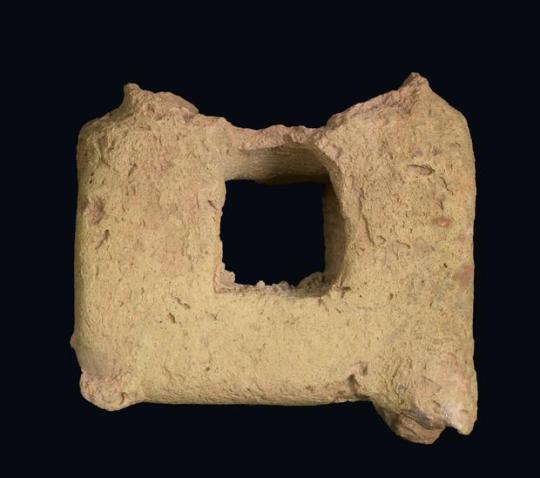
The artifacts were discovered in the late 1990s, at an archaeological site in Southern Israel's Eilat Hills. The finds included "dozens of fragments of clay globular rattles, mostly like table tennis balls, containing small stones, that sound when the rattle was shaken" and "two artifacts like miniature votive incense altars, a small figurine of a naked woman or a goddess with raised hands, a characteristic feature of deities or priests, a few other figurines, and colored quartz pebbles." The items were found broken, which the researchers said might have been intentional and done during the ritual ceremonies. An analysis of the clay the items were made of showed that they came from Egypt.
The artifacts were found along the Pilgrimage Road, also known in Arabic as the Darb al-Hajj, which ran from Cairo to the Arabian Peninsula. Camping sites and structures have also been found along the route in the same area the artifacts were found. Researchers believe these areas began to be used in the thirteenth or fourteenth centuries.
"The find-spot of these artifacts next to the camping site, and the comparison of the artifacts to those known in the Muslim world, as well as the fact that these artifacts were found together as a group, lead to the understanding that they were used in magical rituals," the researchers said. "It seems that these rituals were carried out at the site by one or several people who specialized in popular magical ceremonies."
By Kerry Breen.
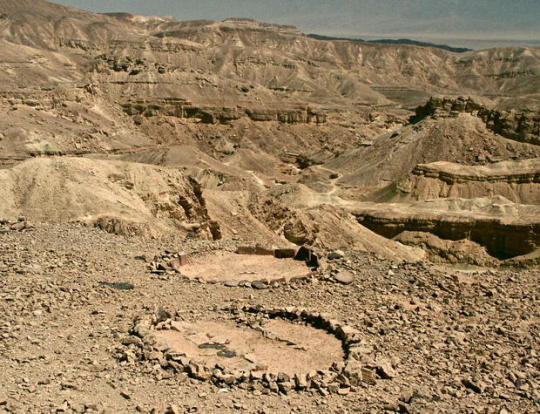

#Artifacts Found in Israel were used by “Sorcerers” in “Magical Rituals” 4 Centuries Ago#Arabian Peninsula#Early Ottoman Period#Eilat Hills#Pilgrimage Road#evil eye#black magic#ancient artifacts#archeology#archeolgst#history#history news#ancient history#ancient culture#ancient civilizations#ancient israel#israeli history
23 notes
·
View notes
Text
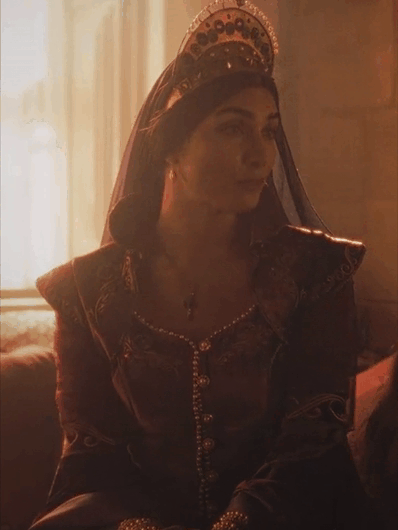







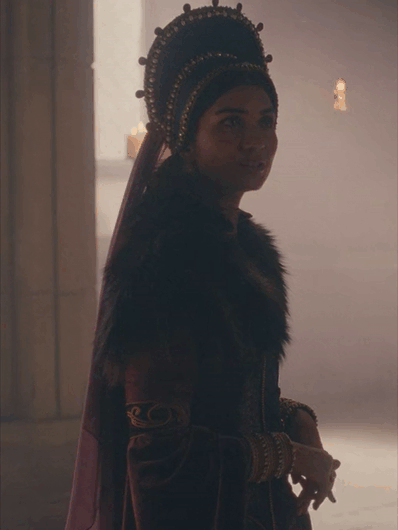
Rise of Empires: Ottoman + Costumes
Mara Branković's purple & golden dress and purple, golden & black coat in Season 02, Episode 02.
// requested by @garnetbutterflysblog
#Rise of Empires: Ottoman#Mara Branković#Mara Brankovic#period drama#perioddramaedit#costumes#costume drama#costumesource#1400s#15th century#purple#gold#black#Constantinople#Istanbul#Ottoman Empire#Buda#Budapest#Hungary#Europe#requests
62 notes
·
View notes
Text




Happy Halloween from my fuzzy prince of darkness who is convinced these wings weigh 100lbs 🎃👻🖤
#the way we go through this every single year#do you see him trying to dramatically throw himself from the ottoman?#cats#black cats#my fuzzy prince of darkness
4 notes
·
View notes